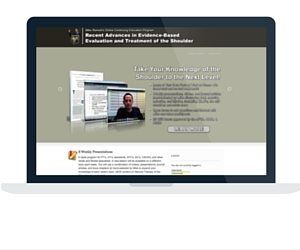Over the years, the idea of posterior capsular tightness and glenohumeral internal rotation deficit (GIRD) in baseball pitchers has grown in popularity despite not much evidence.
I routinely see baseball players ranging from kids to MLB pitchers that have been told they have GIRD and need to aggressively stretch their posterior capsule and into shoulder internal rotation. One of the first recommendations I make is essentially addition by subtraction – stop focusing on these areas! I’ve discussed at length my feelings on why I don’t use the sleeper stretch, which is something I haven’t used in over a decade and none of my athletes have a loss of internal rotation.
Many people assume that GIRD is caused my posterior capsular tightness, without assessing the posterior capsule itself. Blindly applying treatments without completely assessing the person is always a bad idea, especially considering GIRD may be normal and not even an issue.
Assessing the posterior capsule can be tricky and most text books continue to demonstrate the technique poorly. I wanted to share a quick video showing how to assess the posterior capsule of the shoulder.
Perform your assessment of the posterior capsule this way and you’ll realize most people can actually sublux posteriorly and that mobilizing the posterior capsule isn’t what they need for GIRD! Keep in mind this is applicable for athletes, you can certainly get a tight posterior capsule for many reasons, I just don’t think this is the primary cause of GIRD so shouldn’t be the primary treatment.
Learn Exactly How I Evaluate and Treat the Shoulder
If you are interested in mastering your understanding of the shoulder, I have my acclaiming online program teaching you exactly how I evaluate and treat the shoulder!

- The evaluation of the shoulder
- Selecting exercises for the shoulder
- Manual resistance and dynamic stabilization drills for the shoulder
- Nonoperative and postoperative rehabilitation
- Rotator cuff injuries
- Shoulder instability
- SLAP lesions
- The stiff shoulder
- Manual therapy for the shoulder
The program offers 21 CEU hours for the NATA and APTA of MA and 20 CEU hours through the NSCA.
Click below to learn more:






